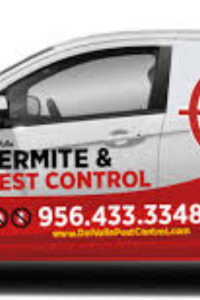The attic is one of the most overlooked areas of a home when it comes to pest control. Warm, quiet, and often dark, attics provide the perfect environment for pests such as rodents, squirrels, bats, birds, and insects to nest and multiply. Ignoring an infestation in this space can lead to structural damage, health risks, and costly repairs. Effective pest removal from the attic is essential for protecting your home and maintaining a safe living environment.
Common Pests Found in Attics
Several types of pests commonly invade attics:
-
Rodents (mice and rats) – These pests gnaw on wires, insulation, and wooden structures, causing fire hazards and property damage.
-
Squirrels – Squirrels often enter through roof vents and can chew on beams, creating noise disturbances and structural concerns.
-
Bats – While beneficial for controlling insects, bats can leave droppings (guano) that pose serious health risks due to histoplasmosis.
-
Birds – Birds may nest in eaves or vents, leaving droppings that corrode surfaces and attract other pests.
-
Insects – Termites, wasps, and carpenter ants can infiltrate attics, compromising wood structures and creating infestations that spread throughout the home.
Signs of an Attic Infestation
Recognizing an infestation early is key to preventing extensive damage. Common signs include:
-
Scratching or scurrying noises, particularly at night
-
Strong, musty odors or accumulated droppings
-
Chewed wires, insulation, or wood
-
Stains or nests near vents, chimneys, or eaves
-
Dead insects or unusual insect activity
Pest Removal and Control Strategies
Effective attic pest removal requires a combination of inspection, elimination, and preventive measures:
-
Thorough Inspection – Professionals first identify the type of pest, the extent of the infestation, and entry points to ensure a targeted removal plan.
-
Safe Removal – Depending on the pest, removal methods may include humane trapping, exclusion techniques, or targeted pesticide application. Dead animals and nests are carefully removed to prevent health risks.
-
Sanitation and Cleaning – Attics are cleaned and sanitized to remove droppings, debris, and contaminated insulation, reducing odors and disease risks.
-
Structural Repairs – Entry points such as vents, holes, and gaps are sealed to prevent re-entry by pests. Damaged insulation or wood may also be replaced.
-
Preventive Treatments – Pest control experts often apply residual insecticides or deterrents to minimize the risk of future infestations.
Benefits of Professional Attic Pest Removal
-
Safety – Professionals use safe methods that protect homeowners from exposure to harmful droppings and diseases.
-
Efficiency – Experienced technicians quickly identify and remove pests while minimizing property damage.
-
Long-Term Protection – Sealing entry points and applying preventive treatments reduces the likelihood of reinfestation.
-
Peace of Mind – Knowing your attic is free from pests ensures a healthier and safer living environment.
Conclusion
The attic is a prime target for pests seeking warmth, shelter, and safety. Ignoring an infestation can lead to structural damage, health hazards, and ongoing nuisance problems. Professional pest removal from the attic addresses these risks through thorough inspections, safe removal, and preventive strategies. By taking proactive steps to manage attic pests, homeowners can protect their property, maintain a healthy home environment, and enjoy peace of mind knowing their attic is secure and pest-free.

